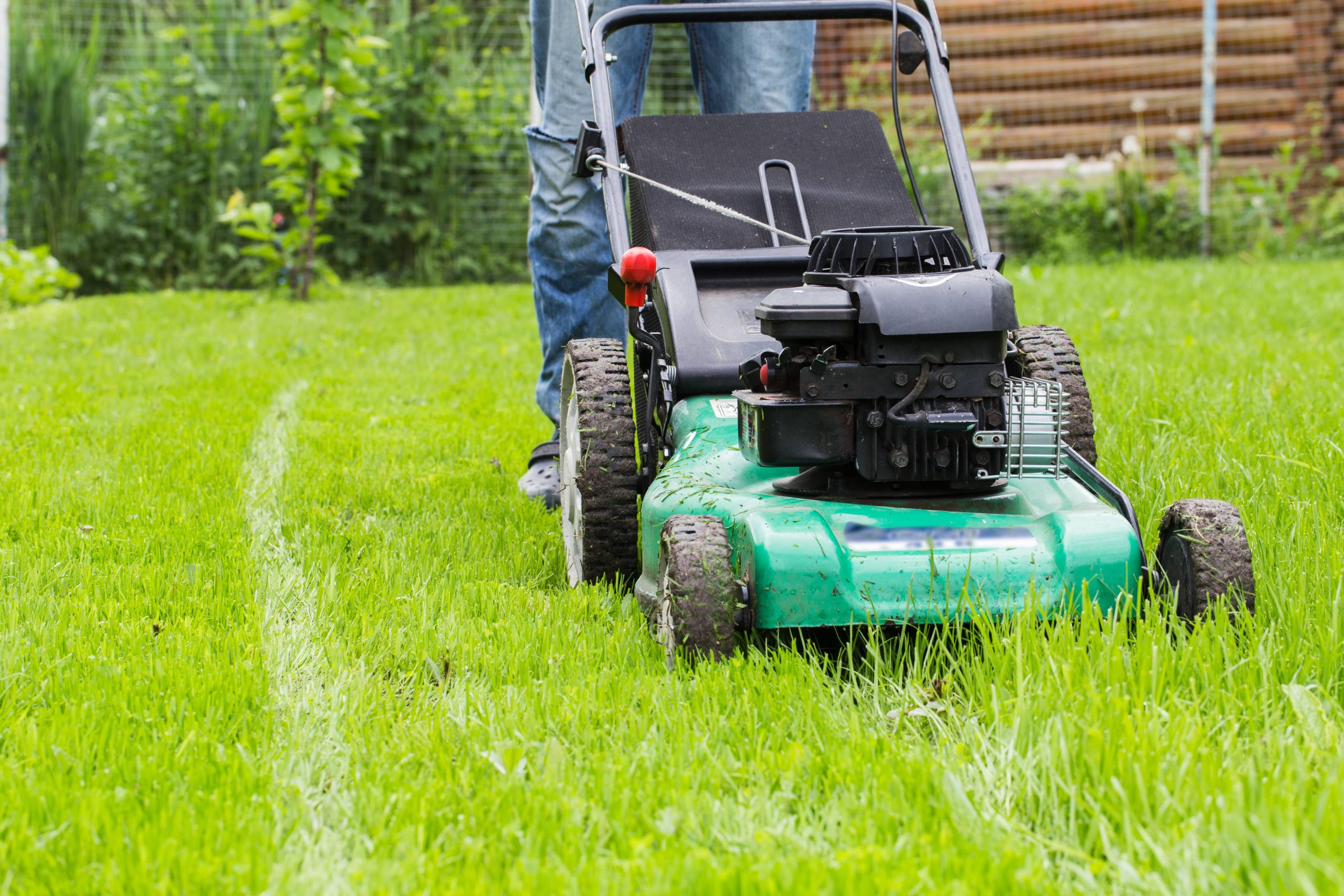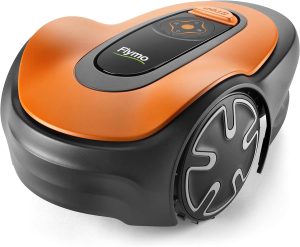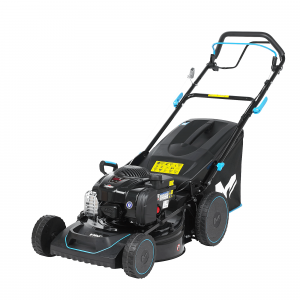Looking to learn more about the different types of lawn mowers that exist, and their strengths and weaknesses?
In this guide, we’ve explained the six different types of lawn mowers you’ll find in the UK.
We’ve also looked at what each type of mower is good and bad at, in case you’re deciding which type of lawn mower to buy.
1. Rotary petrol lawn mowers
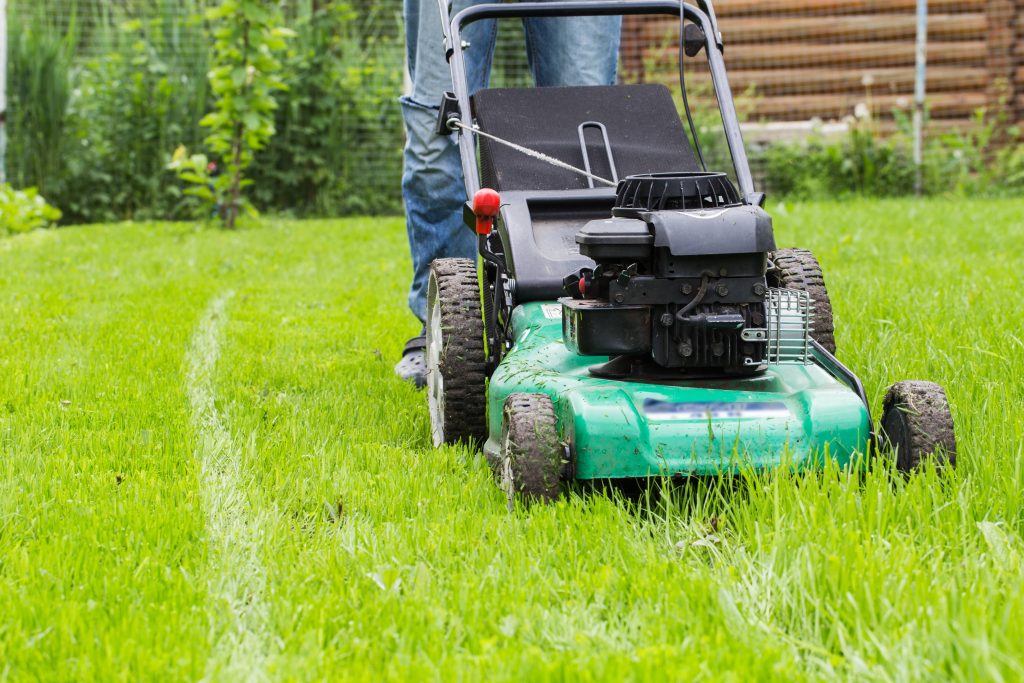
When you picture a lawn mower in your mind, chances are, you’re thinking of a rotary petrol mower.
This is the classic type of lawn mower, used mostly on medium-sized gardens. It has a single rotary blade that sits parallel to the ground, powered by a two-stroke or four-stroke petrol engine. Typically, you can adjust the cutting height with a lever on the front of the mower.
Rotary petrol mowers almost always come with a 40-60 litre grass box, helping you to collect grass clippings as you mow. They often also come with a mulching plug, allowing you to return your clippings to decompose into the grass.
The petrol motor in these types of mowers also typically makes the mower self-propelled. Meaning, you don’t have to use too much effort to keep the mower going forward when using it.
This is why if your garden is on the larger side, or has slopes that you need to mow up, you might prefer to invest in a petrol mower – even though they can be expensive.
Apart from their price, the other issue with petrol lawn mowers is the noise and fumes that they generate. Also, using petrol mowers on E10 fuel can be problematic in the long run, in that it can damage your engine, which is another reason why electric mowers are becoming more popular.
2. Rotary electric cordless lawn mowers
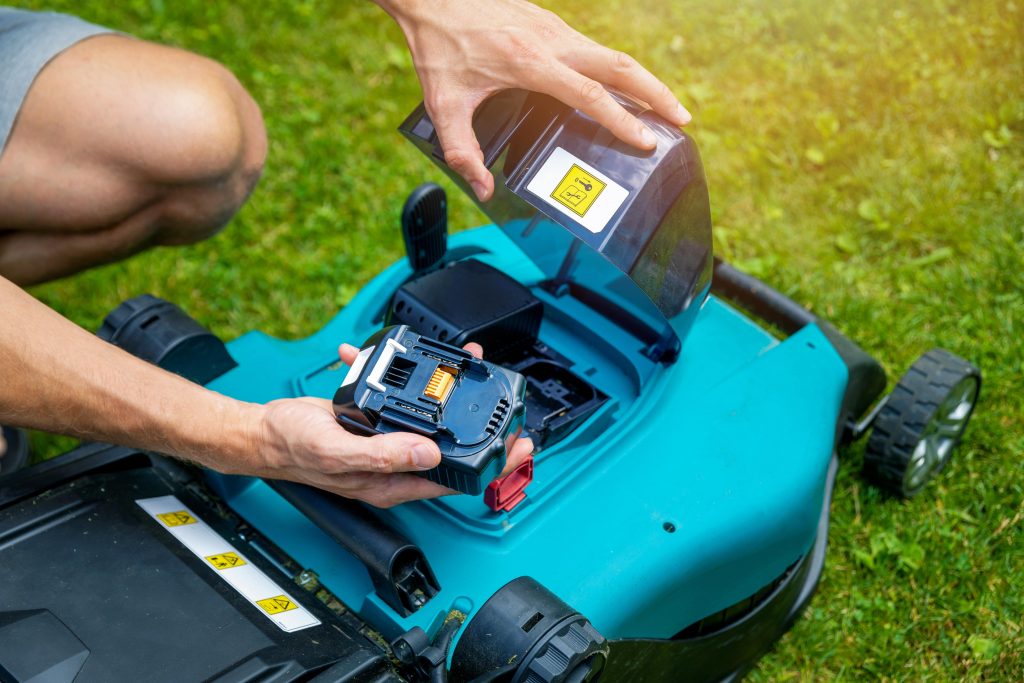
If you want to avoid the hassle of buying and storing petrol, you can also use electric-powered rotary mowers that have a battery, rather than a petrol engine.
Cordless electric mowers work in the same way as petrol mowers. However:
- They are often a bit smaller.
- Most of the time, they’re not self-propelled – you’ll have to push them yourself.
- They’re quieter, and produce less fumes.
Although petrol mowers are expensive, cordless mowers aren’t often much cheaper. This is because the batteries they use are very expensive.
Going for an electric cordless mower isn’t a good idea if you have a large lawn. You will run out of charge before you’ve finished mowing, and you might struggle with pushing the mower for hours on end, since it’s not going to be self-propelled.
However, if you don’t mind the price, these types of mowers are great for medium-sized gardens. Just ensure you get a mower with plenty of power, so that it can handle long grass.
3. Rotary electric corded lawn mowers
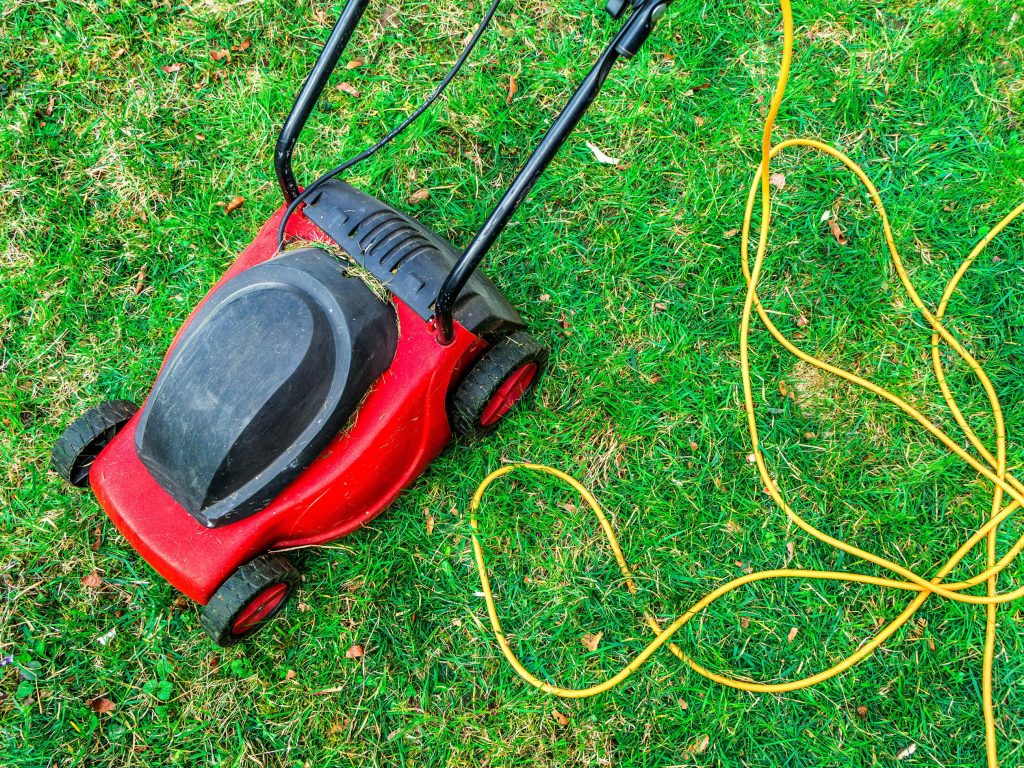
To save money, you can also get electric corded lawn mowers, which don’t have a battery.
With these types of lawn mowers, you still get a rotary blade, and a grass box to collect clippings. However, you also get a 10-12m power cord, which must be plugged in at all times.
These types of electric-powered lawn mowers are best for small gardens. If you have a large garden, you’ll need to buy extension cables, which can pose a safety risk. The extension lead can also make it difficult to mow around trees, bushes, or other obstacles in your garden.
Apart from their price, the advantage of this type of mower is how it will run for as long as you want it to, without the need to refuel, or recharge the batteries.
Corded lawn mowers are very rarely self-propelled, but they can be reasonably powerful. Ensure to look for a mower with a high power rating, compared to its size and weight. A 1600W rating is quite good for a larger mower with around a 35-40cm cutting width.
4. Hover lawn mowers
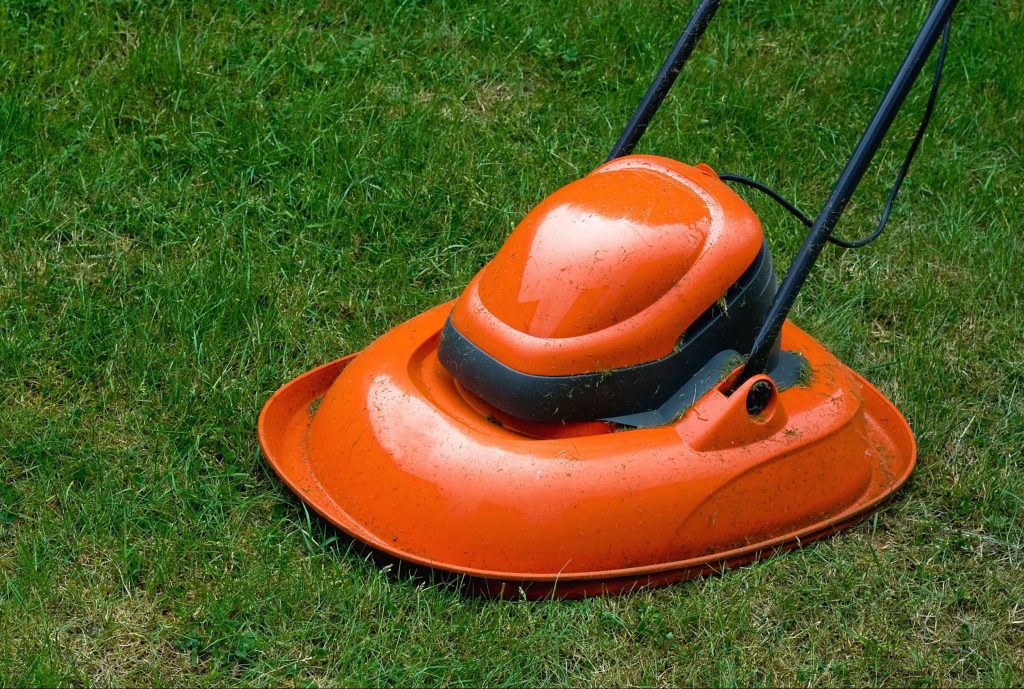
Hover mowers have a completely different design to the three types of rotary lawn mowers we’ve looked at so far.
Rather than having four wheels that you push them around on, hover mowers float around on a cushion of air, inside the cutting deck. The motor is connected to a fan, which keeps this air cushion running for as long as you’re mowing the lawn.
The main advantage of this design is how it helps you to mow uneven lawns. You won’t have to worry about your wheels getting stuck on anything, including on slopes. You can even mow side-to-side if you want to.
However, it’s important to ensure that the hover mower has been well-designed. Otherwise, it won’t float as well as you’d want it to. It’s a good idea to look at plenty of customer reviews before buying.
It’s also important to note, many hover mowers don’t have a grass clippings box. Some do, although it’s often very small, at only 10-20L or so.
In addition, hover mowers are typically electric, and have a power cord, rather than being battery powered. However, some larger, more expensive models have a petrol motor.
5. Push lawn mowers
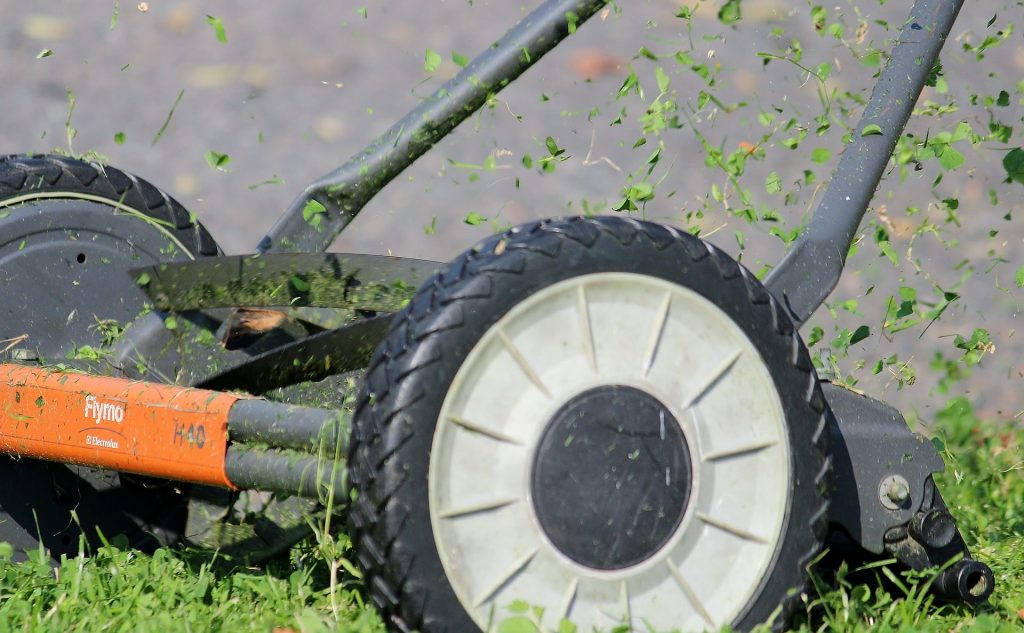
Push mowers, also known as a cylinder mower, manual mower, or reel mower, are the cheapest, most basic type of mower you can buy.
Rather than having a rotary blade like on a rotary mower, manual lawn mowers have a cylinder of blades that rotate forwards as you mow.
At each end of the cylinder on cylinder mowers, there is a wheel, so you get two wheels in total. However, you can find cylinder mowers with four wheels as well. In this case, the front wheels are larger, helping you traverse uneven ground, while the back wheels provide stability.
Mowing the lawn is an entirely mechanical process – there is no engine or motor helping the blades to spin. As a result, reel mowers can require a decent amount of effort to use – they’re best really for small gardens.
Also, they come with a basket, rather than an actual grass box. Most of the time, these baskets aren’t very good at successfully collecting all of your clippings.
However, there are many benefits to manual lawn mowers, other than their low costs:
- They’re unlikely to break down, since they’re so simple.
- There is no refuelling or recharging required, so you can mow anytime.
- They have nearly no environmental impact, when compared to burning petrol, or creating the batteries required for cordless electric mowers.
6. Robotic lawn mowers
Robotic lawn mowers are the most recent innovation on this list.
As the name implies, robotic lawn mowers do automatic lawn mowing. They mow the lawn when you tell them to, typically at scheduled intervals. Then, they return to a charging station or a miniature garage to recharge their battery, ready for the next time the lawn needs mowing.
Because they’re so small, these types of lawn mowers are not great for large lawns. Most robotic mowers are best for gardens up to 500 square metres in size. Also, most of the time they don’t have a grass box, again due to their size.
To prevent the mower leaving your lawn, you normally have to lay boundary wire, which can be buried, or left on the ground.
Robotic lawn mowers are normally quite expensive, because they’re battery-powered, and due to the amount of tech they have. Some even come with mobile phone apps, allowing you to control when and how they mow your lawn.
The quality of the cut you get with these types of mowers is actually quite good, as long as you get a good mower, and don’t cheap out. The higher-end ones even have collision sensors, which is useful if you have pets or kids.
For most people, the convenience of robotic mowers is nice to have, but is by no means essential. They’re not for gardening enthusiasts either – you won’t be able to mow stripes very well with this type of lawn mower.
7. Ride-on lawn mowers
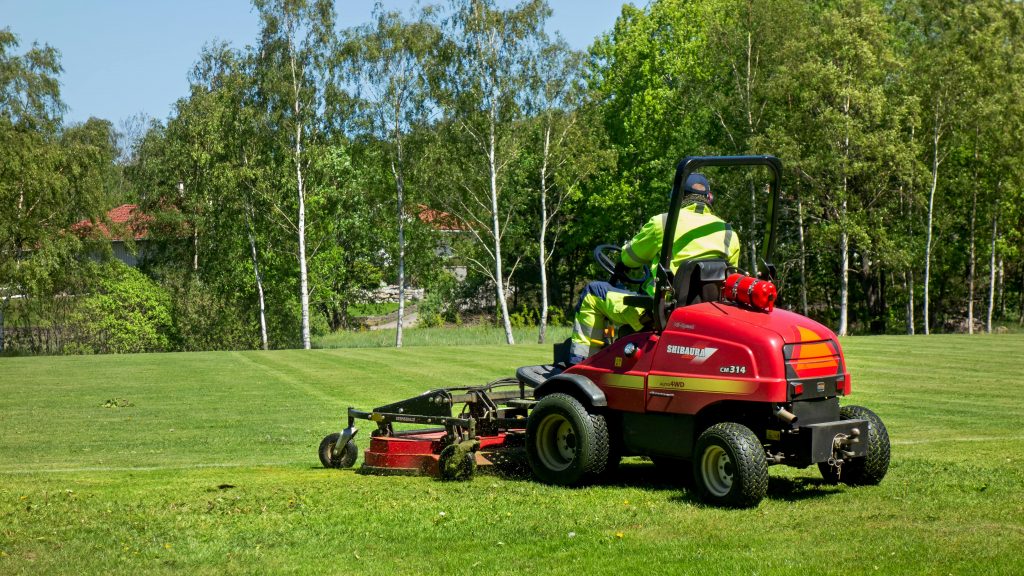
For very large gardens and meadows, you may be better off with a riding lawn mower.
Because you can drive them around, and they have a massive cutting width, ride-on mowers are best for if you have a very large area to mow, such as a field. These types of mowers normally come with a 4-stroke petrol engine.
The downside of course is that ride-on mowers are extremely expensive. You can expect to pay about £2000 for a more basic one.
There are also lawn tractors, which are slightly different to ride-on mowers:
- Ride-on mowers have the cutting deck at the front of the mower. They’re best for when you need extra manoeuvrability, and want to be able to mow underneath obstacles, such as branches or bushes, since the cutting deck extends in front of the mower.
- Lawn tractors have the cutting deck underneath the mower, or more specifically, underneath where you sit. These types of mowers have more attachments, despite being less manoeuvrable.
Most of the time, ride-on mowers side-discharge grass clippings, although you can get lawn tractors that collect clippings at the back.
Conclusion
This is the end of our guide explaining the different types of lawn mower for sale in the UK right now.
Hopefully this article helped you decide which type of lawn mower to buy, if you’re shopping for a new one.
If you have any questions about the different mower types, feel free to leave them in the comments below.

I’m Josh, and I’m the head writer at Lawn Care Pro.
I love everything lawns, but I’m a bit of a lawn mower nerd. I spend a lot of my free time tinkering with mowers, and planning my mowing schedule for the next few weeks.
I’m also into cars, which comes in very helpful when servicing a mower engine!

